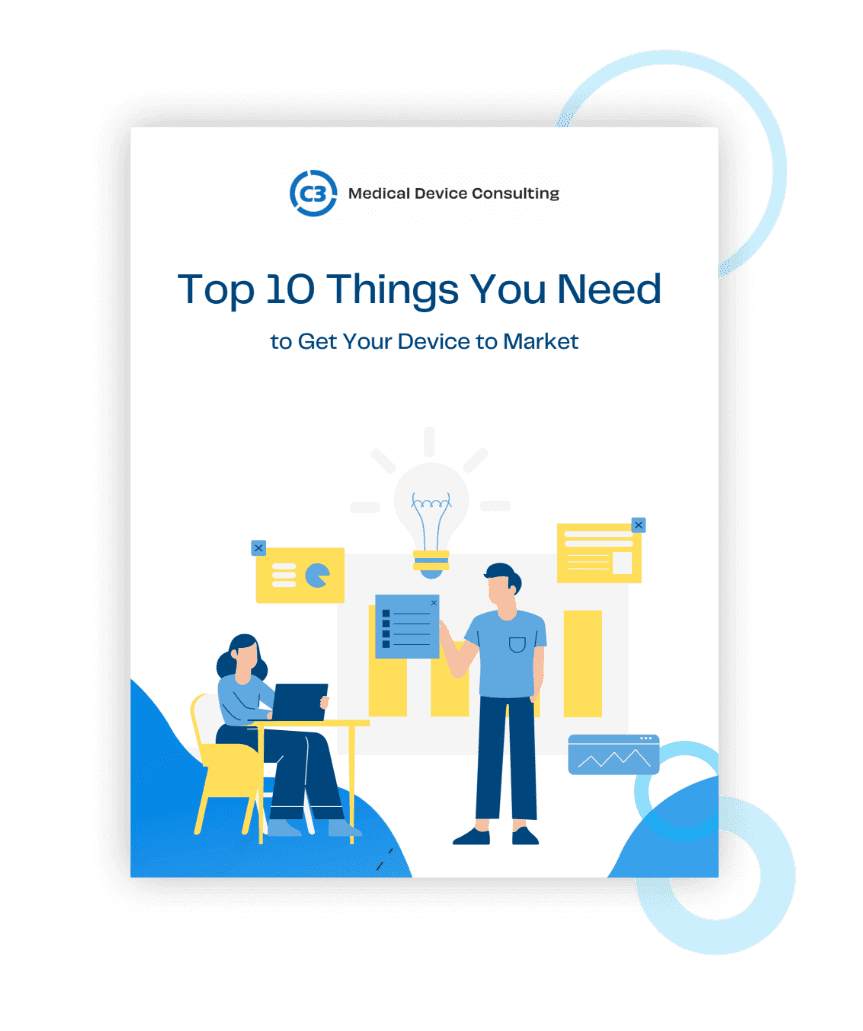The Steps Involved For a Medical Device Manufacturer To Get Its Mobile Applications/Connected Devices Approved
Artificial Intelligence is increasingly being used by organizations in the health care industry for a wide range of administrative, clinical, and research purposes. Using AI technologies in, for example, mobile applications/connected devices helps health care providers with scheduling patients, diagnosing their medical conditions, and monitoring the status of their health.
There is no doubt that AI offers great opportunities for the improvement of health care – but there are also many challenges to overcome. On more than one occasion AI-enabled devices have e.g. in recent years recommended the wrong type of treatment for certain conditions. This is one of the reasons why the FDA regulates AI medical products so strictly. After all, the agency plays a crucial role in ensuring both the effectiveness and the safety of these products.
How Does The FDA Regulate AI Products?
The FDA mainly regulates AI products based on the amount of risk an inaccurate recommendation could hold for patients and also the purpose for which they will be used. If a medical product is used to help prevent, diagnose, mitigate, treat, or cure any type of illness, the organization will classify it as a medical device. If such a product relies on Artificial Intelligence or Machine Learning, the agency will categorize it as a SaMD (Software as a Medical Device).
Examples include computer-aided image-processing software that helps to detect breast cancer and software that is used to help with the detection and diagnosis of strokes. Certain consumer products, including smartphone applications, could also be classified as SaMD.
When software is fully integrated with the medical device, for example, the built-in software that is used in X-ray panels, it is categorized as Software in a Medical Device. AI technologies are increasingly also used in these products. Similar to any other medical device, such AI-enabled software is regulated by the FDA depending on the level of risk involved.
FDA Risk Categories For AI-enabled Software
Class I. These devices pose the lowest level of risk. One example is the software that merely shows the readings obtained from a glucose monitor.
Class II. The risk involved with these devices is regarded as moderate to high. One example is the AI software that is widely used to analyze mammograms and then recommend to the radiologist whether the specific case should be followed up or not.
The majority of Class II devices are subject to what is known in the industry as a 510(k) review. This involves the manufacturer proving that the particular product is substantially the same as a device that is already on the market, i.e. it has the same technological attributes and intended use.
Another option open to some manufacturers of Class I and Class II devices is to send a De Novo request to the FDA. This route is only available if the device in question is novel, but the underlying technology and safety features are already well established in the market and the risk involved is, therefore, relatively low.
Class III. These are devices with the highest perceived risk levels. The list includes products that sustain or support life or play an important role in preventing harm to human health. Class III devices have to go through an extensive approval process before they can be marketed. The developer must provide clinical proof that the product’s benefits exceed its risks.
What Happens If The Manufacturer Wants To Make Changes After An AI Medical Product Has Been Approved By The FDA?
After the FDA approves a product, the manufacturer can start marketing it. If they want to make any changes after that, the FDA will evaluate the situation based on the nature of the change and the risks involved before making a decision on whether a premarket review will be necessary or not.
Generally speaking, every time the manufacturer wants to make a change that will significantly impact the performance of the device or update the software involved, an additional FDA review might be required.
How We Can Help a Medical Device Manufacturer To Get Its Mobile Applications/Connected Devices Approved By The FDA
Finding the right partner to bring a medical device to life is hard. C3 Medical provides the plan and people you need so you can feel confident in your product’s success.
C3 provides a well-defined process so you know what steps to take to get to your goal. We’ve helped hundreds of people like you avoid common pitfalls that lead to wasted time and money. Our clear process assures your product meets expectations and is manufactured so you can get it into the hands of the people who need it. If you are a medical device manufacturer and you want your mobile applications/devices approved by the FDA, we can help. Click on this link for a free design audit or find out more about us here.










